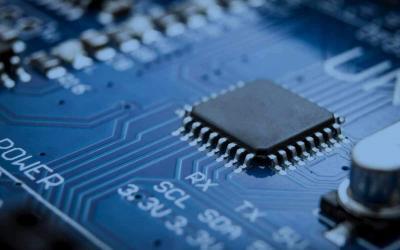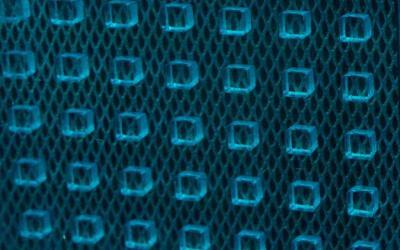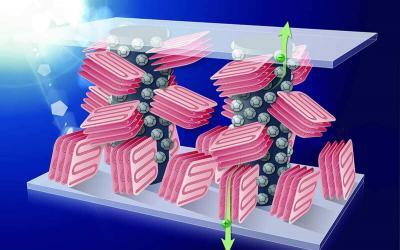ISO Class 4 Microelectronics Cleanroom Completed for NexLogic Technologies, Inc.
NexLogic Technologies, Inc. has announced the completion of its International Standards Organization (ISO) 14644-1 Class 4/10,000 and the equivalent Federal Standard 209E (FS209E) Class 10 clean room as an integral part of its new microelectronics services and manufacturing capability.
Decernis Acquires Food Fraud Database from USP
The Food Fraud Database, launched by USP in 2012, helps food manufacturers, retailers, and other stakeholders make informed decisions about the vulnerability of their food ingredients to economically motivated adulteration. This supports compliance with FSMA and GFSI requirements by providing information on the pattern and history of food fraud and the identification of potentially hazardous adulterants.
Neovii & Mundipharma Agreement for Solid Organ & Stem Cell Transplant
Neovii pharmaceuticals AG of Rapperswil, Switzerland and Mundipharma have entered into an agreement giving Mundipharma the rights to develop and distribute its polyclonal antibody immunosuppressant Grafalon®, in China and Japan from end October.
ACROMEC Healthcare Pharma Cleanroom Contract Worth $6.2M
ACROMEC Limited (“ACROMEC”, SGX:43F), an established specialist engineering service provider in the field of controlled environments serving mainly the healthcare, biomedical, research and academia sectors, has secured three new contracts totaling approximately S6.2 million.
Dynacure secures €47 million financing to advance lead program into clinical development
Dynacure, a biotechnology company developing new treatments for patients affected by serious orphan disorders, announced today the completion of a €47 million financing round (~US$55 million) to advance its lead program into clinical development. Andera Partners (formerly Edmond de Rothschild Investment Partners) led the financing round, joined by Pontifax, Bpifrance, Kurma Partners and IdInvest Partners.
Indium Oxide Nanocrystals Comprise New UV Narrow-Band Photodetector
Semiconductor quantum dots (nanocrystals just a few nanometers in size) have attracted researchers’ attention due to the size dependent effects that determine their novel electrical and optical properties. By changing the size of such objects, it is possible to adjust the wavelength of the emission they absorb, thus implementing selective photodetectors, including those for UV radiation.
Antimicrobial Peptide Production Induced by Nanofiber-Based Wound Dressings
Nanofiber-based wound dressings loaded with vitamin D spur the production of an antimicrobial peptide, a key step forward in the battle against surgical site infections, or SSIs. The findings by Oregon State University researchers and other collaborators, published Wednesday in Nanomedicine, are important because SSIs are the most common healthcare-associated infection and result in widespread human suffering and economic loss.
Porous Materials Shed Light on Environmental Purification
porous materials such as zeolites and metal-organic frameworks have drawn the attention of the scientific community due to the wide range of applications derived from their porosity. Recently, a new class of all organic materials has emerged – the hydrogen-bonded organic frameworks (HOFs).
Pharmaceutical Plant in Skidel to Open in October
pharmaceutical plant in Skidel (Grodno Oblast) will be launched in October, the press service of the Council of Republic told BelTA following the meeting between Speaker, curator of the Belarusian-Indian cooperation Mikhail Myasnikovich and Indian investors Jayant Kaushik, Alok Kumar (Lok-Beta Pharmaceuticals (I) Pvt. Ltd) and Director of OOO Novalok Kumar Manoranjan.
Inert Polymer Added to Plastic Solar Cells Enables High Efficiency & Easy Production
Polymer plastic solar cells remain an industry priority because of their light weight, flexibility and cost-effectiveness. Now scientists from Stony Brook University and the U.S. Department of Energy’s (DOE) Brookhaven National Laboratory (BNL) have demonstrated that these types of solar cells can be more efficient and have more stability based on new research findings.
R&D Operations Hub to Open in Chengdu, China
R&D Operations Hub to Open in Chengdu, China Sanofi to further accelerate its scientific presence with the opening of a Global R&D Operations Hub in Chengdu, China Sanofi (EURONEXT: SAN) (NYSE: SNY) is launching a Global R&D Operations Hub with a...
Catalent Signs Agreement To Acquire Juniper Pharmaceuticals, Inc.
Catalent, Inc. (NYSE: CTLT), the leading global provider of advanced delivery technologies and development solutions for drugs, biologics and consumer health products, today announced that it has agreed to acquire Juniper Pharmaceuticals, Inc. (NASDAQ: JNPR), including its Nottingham, U.K.-based Juniper Pharma Services division.












